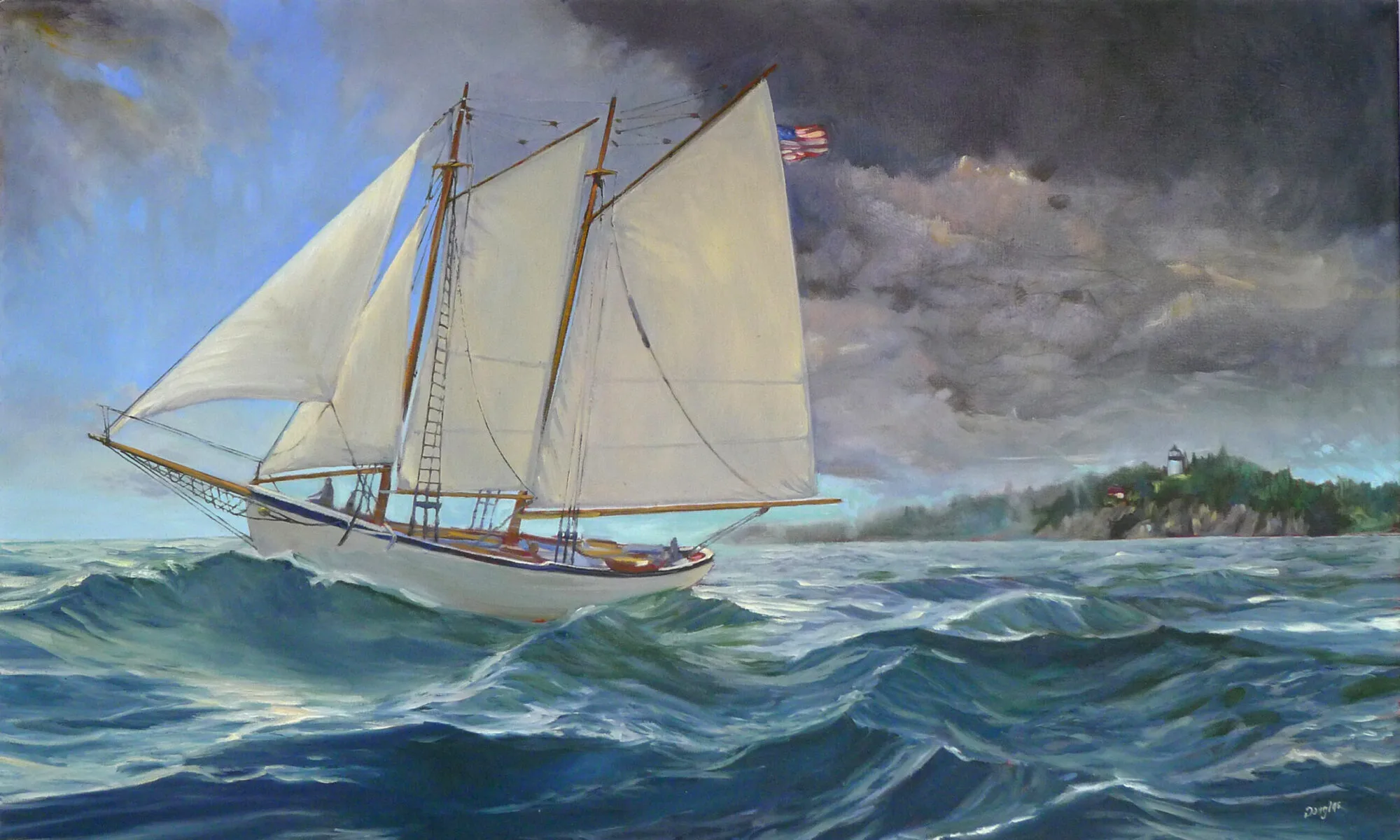Portraits of the dead are difficult, but they’re also satisfying and meaningful to paint.
 |
| Reunited with Jesus, by Carol L. Douglas |
Occasionally I have the opportunity to do a portrait of someone who has shuffled off this mortal coil. These are the most difficult portraits to paint, because there are never good reference photos available. You’re changing angles and planes, guessing their height and weight, and dealing with terrible flash or shadows. Yet these are the best photos the family has.
It’s no wonder that they often feel overworked to me when I’ve finished; I’ve struggled to invent a structure from a snapshot. However, if Hans Holbein the Younger could paint his magnificent lost portrait of Henry VIII from a pattern, I’ve got nothing to complain about.
 |
| This infant died after birth, and all his mother had was a very blurry snapshot. It’s, unfortunately, the only photo I have of the painting. |
Despite the technical difficulties, these reflections on mortality are among my favorite subjects. They’re a comfort to the survivors, who struggle to find meaning in their own personal disaster. They force me to draw from my own painting and drawing experience. Can I draw a plausible hand or foot with no reference photo at all? Most importantly, they’re thought-provoking.
Death is the deepest question facing mortal man. We all will die someday. That’s absolute. What will it be like? Where will we end up? Will we see our loved ones again? Will we work, or sing endlessly? (Will singing feel like work, or will I be able to belt out a tune like Kate Smith?)
The subject of this portrait passed away last summer, much too young—my age, in fact. Her daughter-in-law sought a way of comforting her husband on the loss of his mother, of reassuring him that her final destination was, indeed, Heaven.
 |
| This is someone I knew very well: my sainted Aunt Mary, who died the day before her sixtieth birthday. It’s a portrait of her servant’s heart. |
I’d intended to concentrate on the figures and scumble a vague background. However, I’ve been thinking about angels for months. Angels are not cute putti or disembodied beings. They’re vigorous workmen in the Kingdom of God. It seemed like a good opportunity to paint them and think about what Heaven might be like. My deep subconscious apparently thinks that it’s a bustling kind of place.
For those unfamiliar with traditional Christian imagery, here’s some explanation: Jesus has a seat at the right hand of God because, in the Biblical era, that meant an honored guest shared eminence and authority with his distinguished host. But he’s relaxed enough to come down from his throne and welcome an individual to heaven, just as he was comfortable coming to earth to share our human struggles.
 |
| Only one person in this portrait is deceased. He’s dancing with his elegant and wonderful wife, in the Pennsylvania woods he loved so much. |
The lamb on his seat-back is the Agnus Dei, the “lamb of God who takes away the sin of the world.” The figure to the right of God is the Recording Angel, mentioned by two Old Testament prophets. The orb in God’s hand is not a strictly Christian symbol. Its origin is the plain round globe held by the god Jupiter. This became a standard symbol of power in the post-Roman world. It came into Christian iconography through the Salvator Mundi. God’s outfit is quoted directly from God Inviting Christ to Sit on the Throne at His Right Hand (1645) by Pieter de Grebber. The floating cross on which the Throne of God sits is my own idea, although there’s certainly “nothing new under the sun.”
All this sounds very Catholic, and for good reason. During the time when Christian symbolism was evolving, the Catholic church was the only game in town. I was concerned that it would be too much for a modern client. It turns out that the recipient of the painting was raised as a Catholic. These will be familiar images to him. It’s just another example of how “all things work together for good for those who love God.”




